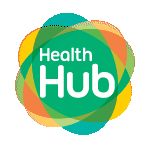This article explores the various subsidies provided in public and community hospitals, as well as for drugs and vaccinations, aimed at making healthcare more affordable for Singapore citizens and residents.
To ensure that healthcare remains accessible and affordable for its patients, a range of subsidies are provided in public healthcare institutions and government-funded community hospitals.
Subsidies in Public and Community Hospitals
Singapore Citizens and Permanent Residents are eligible for up to 80% and 50% subsidies, respectively. Subsidy levels are determined through household means-testing using monthly Per Capita Household Income (PCHI)1 to account for the overall financial resources of the household to support its members. For households with zero PCHI, the Annual Value(AV)2 of their residential property is used to determine subsidy levels.
1 Monthly PCHI is computed as the total gross household monthly income divided by the total number of family members living together in the household. Gross monthly household income includes basic employment income, trade/self-employed income, overtime pay, allowances, cash awards, commissions, and bonuses.
2 Annual Value is the estimated gross annual rent of a property if it were to be rented out, excluding furnishings and maintenance fees. It is determined by IRAS, and may be checked via mytax.iras.gov.sg. Subsidy levels in 2024 will be determined using 2023 Annual Values.
For more detailed information on government subsidies in public and government-funded community hospitals, you can refer to the following links:
- Acute Inpatient Care
- Specialist Outpatient Care (SOC)
- Day Surgery and Day Operation
- Inpatient Sub-Acute and Rehabilitative Care Subsidy Framework
Subsidies for Drugs and Vaccinations
In addition to hospital care, subsidies for drugs and vaccinations are also provided at public healthcare institutions.
For more information on subsidies for drugs and vaccinations, please visit the following links:
- Standard Drug List (SDL)
- Medication Assistance Fund (MAF)
- Vaccination and Childhood Development Screening
- National Adult Immunisation Schedule (NAIS)

HealthHub AI















